
WAR • ROOM • ECHO: Regarding the Pain of Other Cyborgs
A collaborative Transmedia Performance-Installation and Research Project
- WAR • ROOM • ECHO: Regarding the Pain of Other Cyborgs
- Foreword: Artist's Note
- War List CODEX
- War List CODEX 2023
- Why is an archive of wars required?
- The war that is coming is not the last one, part I
- To Err is Human
- Reciprocities
- Narrating War
- Abdication of the Geniuses
- Narrating WAR / HABITAT 1
- Narrating WAR, New Performance Turku, Festival 2020: Mobilities
- Narrating WAR, Mymmälä2, Helsinki
- Cyborg Archives: WAR • ROOM • ECHO, TIFA Working Studios, Pune
- Narrating War, Experimental Event VI – La Torre de Babel, Pori
- Narrating War, Carinarnica, Nova Gorcia
- Narrating War, Museum of Impossible Forms, Helsinki
- Narrating War, Kaapelitehdas, Helsinki
- Narrating War, Clark House, Mumbai
- Narrating War, Pispala, Tampere
- Narrating War, Kallio Public Library, Helsinki
- null.void
- Mänttä's Fine Arts Weeks can give itself to the use of artificial intelligence - Man has a similar relationship to artificial intelligence as to God
- Makkaraa pitelevä koira herättää Pariisin-ikävän Mäntässä
- Ali Akbar Mehta & varialambo - Narrating WAR / Habitat 1
- Narrating War / Pripovedovanje vojne: Ali Akbar Mehta
WAR • ROOM • ECHO: Regarding the pain of other Cyborgs is a collaborative Transmedia Performance-Installation and Research Project. It examines the philosophical terrain of war and the seemingly permanent state of conflict across the globe – addressing (present and past) violent incidents in the world not as isolated events but as a new condition of ongoing, unparalleled warfare.
Examining the philosophical terrain of war, WAR • ROOM • ECHO is a composite project consisting of drawn images, sound, performance and installation elements that explore war and its impact. The project is more than a simple representation of war, where it instead describes war as a universal idea of antagonism – a set of languages and iconographies embedded in our everyday lives and broader social consciousness. Dealing beyond an actual, specific conflict, it confronts its audience with the unpalatable side of humanity, the scenes and situations that resist engagement.

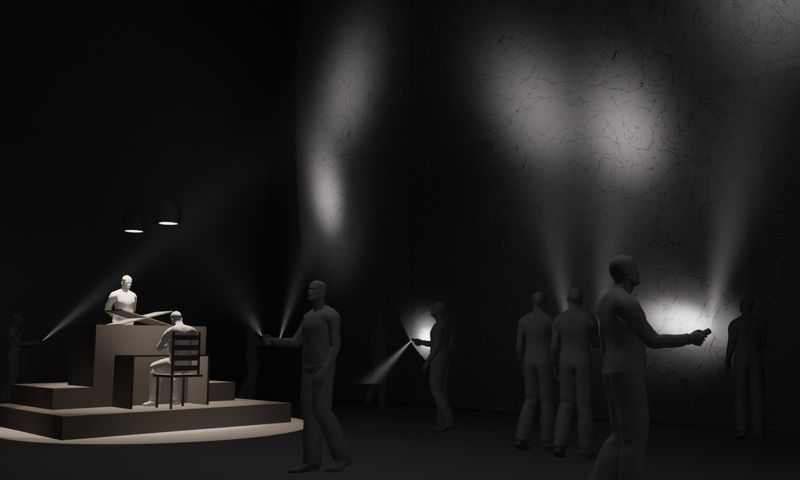
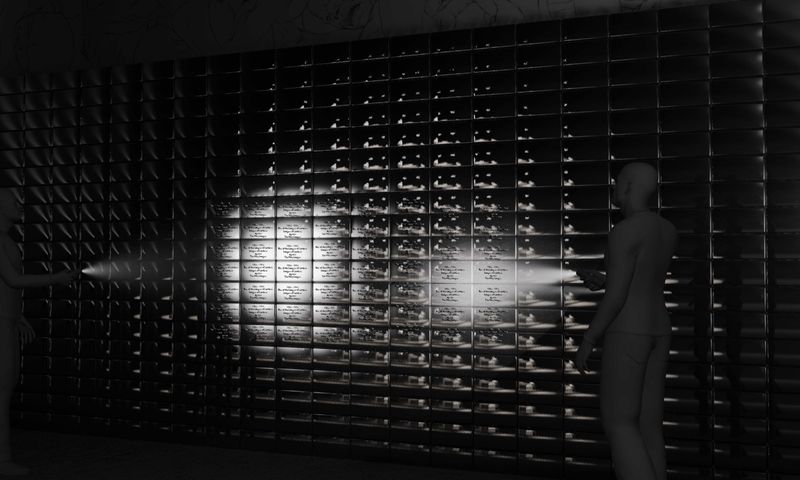
This project consists of several modular components:
The War that is Coming is Not the Last one: a size variable site-specific charcoal drawing on War performed as an act of mourning, viewed in a dark room with torchlight
War List Codex: A publication consisting of a comprehensive yet ongoing list archive of every “War, Battle, Revolt, Revolution, Rebellion, Siege, Sacking, Bombing, and Insurgency” in the world, from 3000 B.C. to the present.
Narrating WAR: Performance reading and typing of the ‘War List Codex’
- Data-generated soundscape based on the live typing of the list
- Cameras that automatically take photographs when triggered by the soundscape, creating continual photographic documentation transforming the viewer into an active performer
Memorial style installation of the War List mimicking vertical graves.
The project is envisioned as a temporary museum – as a hybrid cross between an archaeological site (in itself a branch or a parallel of history), a war memorial, and a tomb:** It is a gesamtkunstwerk on the idea of war and conflict, creating a significant marker in the form of the largest war based research archive spanning 5120+ years – beyond existing notions of geopolitical identity – positioning the project in the context of a para-museum that critically engages and disrupts existing power relations.
…
The Project also gives rise to secondary works within its folds:
The War is Over if you Want It, (compilation-based archival footage film, 480 min.)
Game of War, (animated infographic video, 120 min.)
War.bot, (RSS feed-based web project)
Apocalypse Now, (interactive post-apocalyptic virtual landscape, VR Experience)
Foreword: Artist's Note
In 2002, I assisted documentary-filmmaker Yusuf Mehta to make a short documentary film on the Godhra riots in Gujarat, India, using ‘amateur video documentation’ and ‘found footage’ collected during the riots.
The 2002 Gujarat riots (also known as the 2002 Gujarat violence and the Gujarat pogrom) was a three-day period of inter-communal violence in the western Indian state of Gujarat. Following the initial incident there were further outbreaks of violence in Ahmedabad for three weeks; statewide, there were further outbreaks of mass killings against the minority Muslim population for three months. The burning of a train in Godhra on 27 February 2002, which caused the deaths of 58 karsevaks (Hindu pilgrims) returning from Ayodhya is believed to have triggered the violence. Some commentators, however, hold the view that the attacks had been planned, were well orchestrated, and that the attack on the train was a “staged trigger” for what was actually premeditated violence.
According to official figures, the riots resulted in the deaths of 790 Muslims and 254 Hindus; 2,500 people were injured non-fatally, and 223 more were reported missing. Other sources estimate that up to 2,000 Muslims died. There were instances of rape, children being burned alive, and widespread looting and destruction of property. The Chief Minister at that time, Narendra Modi, currently the Prime Minister – has been accused of initiating and condoning the violence, as have police and government officials who allegedly directed the rioters and gave lists of Muslim-owned properties to them.
As an assistant to the project, I was to segregate and catalog 250 hours of footage, from which a 20-minute short film would be extracted. The first step was a marathon viewing of the footage. I was witnessing War and its aftermaths – kerosene fuelled fires, shattered, mutilated, and gutted corpse-strewn landscapes; stories of ferocious combat, massacre, rape, pillage; and seemingly unending vengeance fuelled violence. This was one of the defining experiences of my life.
Six months later, when I saw the final edit of the film, it was a significantly milder experience, compared to the intensity of the original footage – I immediately missed most of the brutality, the carnage, and the personal accounts of trauma I had viewed in the raw footage. I asked my father, “Why have most of the testimonies, the horror, and the violence been edited out. Why are we not showing what really happened?” He replied, “The role of this film is to move people towards an understanding of the events, the facts, and the nature of violence. At the same time, be mindful that this intent is not to create a bias either for or against. As a documentary filmmaker, one has to keep their personal ideology out of it. There is a fine line between a documentary film and a propaganda film. As a filmmaker, as an artist, one has to keep that in mind.” The idea that representations of violence must be tempered with the responsibilities towards both sides of the story as well as toward the viewer has been a hard lesson to maintain.
How does one be unflinchingly neutral in the face of unprecedented violence? How do we look at a photograph or a video of violence and conflict without identifying a victim or a perpetrator? How do we look at an image without either condemning or condoning, without judgment or a feeling of aligning ourselves to either side? Does our placement within our respective cultures affect our perspective and understanding of an image of violence? Is such a culture-specific reading desirable or does it further cultural alienation? Do images of violence emphasise the tragedy of loss or do they inflame feelings of hatred and vengeance? Can we measure our understanding of conflict and violence through the lens of moral righteousness; based on the validity of the cause as we understand it?
War [wawr] • noun
War is an organised and often prolonged conflict that is carried out by states or non-state actors. It is generally characterised by extreme violence, social disruption and economic destruction. War should be understood as an actual, intentional and widespread armed conflict between political communities, and therefore is defined as a form of political violence or intervention.
One of the distinguishing features of modern life is that it supplies countless opportunities for regarding (at a distance) horrors taking place throughout the World. Images of atrocities have become something of a commonplace. But are viewers inured – or incited – to violence by the depiction of cruelty? Is the viewer’s perception of reality eroded by the daily barrage of such images? What does it mean to care about the suffering of strangers in far off places?
Wars have existed in our history but we treat them as a thing of the past. They continue into our present but have become part of what is Normal. The ultra familiar, ultra celebrated image – of agony, of ruin – is an unavoidable feature of our camera mediated knowledge of War. We have compartmentalised them, sorted and neatly folded them into civilisations, time periods, regions and nationalities. We have apportioned and distributed the trauma of War into bite-sized digestible pieces. We change the channel. By accepting war as normal we have become passive participants. War tears, rends. War rips open, eviscerates. War scorches. War dismembers. War ruins. War is actually Hell. Our failure is one of imagination and empathy. We have failed to hold this reality in mind. It is only when we are confronted with War in its entirety as a singular whole, there is a possibility to be shaken out of our complacence and jolted out of our stupor.
“We – this ‘we’ is everyone who has never experienced anything like what they went through – don’t understand. We don’t get it. We truly can’t imagine what it was like. We can’t imagine how dreadful, how terrifying war is; and how normal it becomes. Can’t understand, can’t imagine. That’s what every soldier, and every journalist and aid worker and independent observer who has put in time under fire, and had the luck to elude the death that struck down others nearby, stubbornly feels. And they are right.” – Susan Sontag, Regarding the Pain of Others
In 1950, William Faulkner said, “I decline to accept the end of man”. We would fall unworthy of his vision if we do not bring ourselves to be fully aware that the colossal tragedy he refused to recognize sixty-four years ago is now nothing more than a simple scientific possibility. Faced with this awesome reality that must have seemed a mere utopia through all of human time, we, the inventors of tales, who will believe anything, feel entitled to believe that it is not yet too late to engage in the creation of the opposite utopia. A new and sweeping utopia of life, where no one will be able to decide for others how they die, where love will prove true and happiness be possible, and where the races condemned to years of solitude will have, at last, and forever, a second opportunity on earth.
War List CODEX
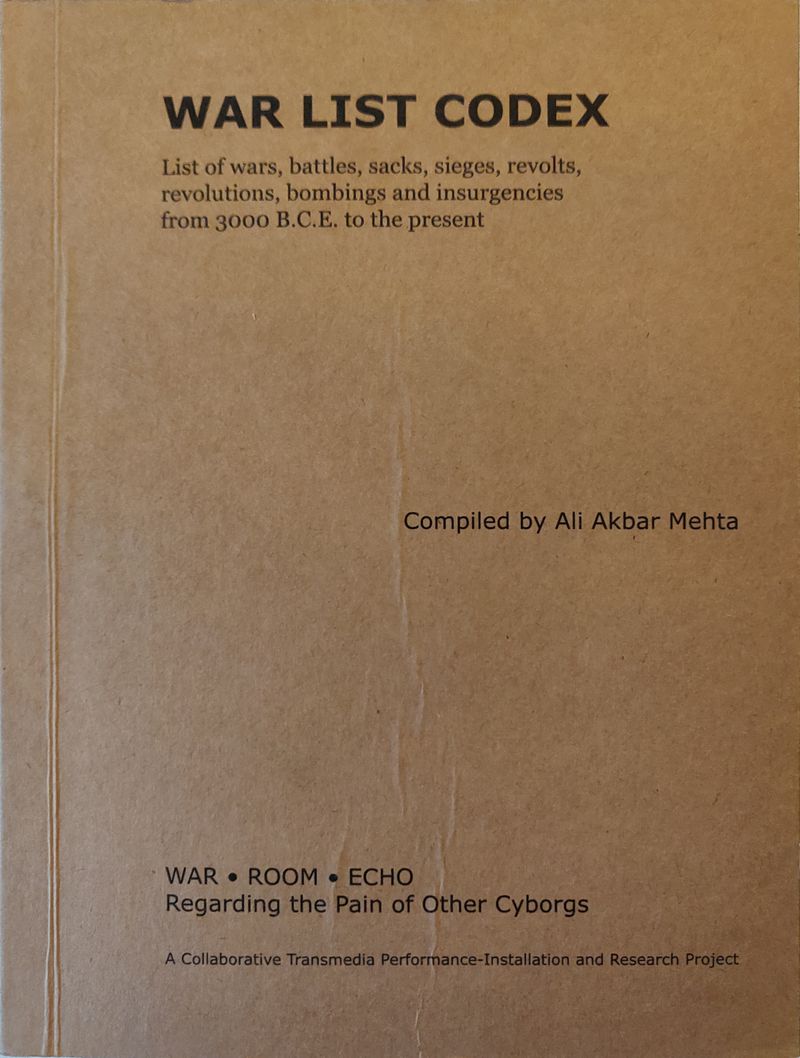

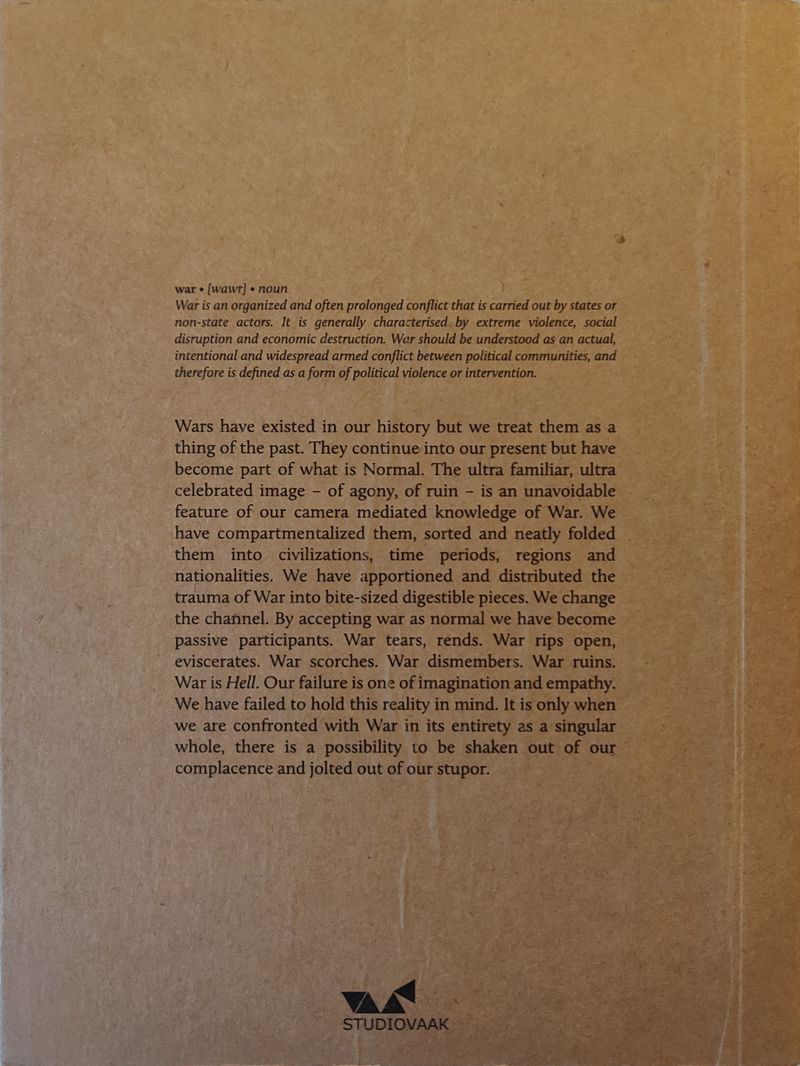
“Violence & the culture it consumes/perpetuates is a fundamental condition lodged in the core of human experience. It is simultaneously private, public, self-intimating & collective.” To make visible this phenomena, I began research in 2014 to compile a timeline of ‘every war, battle, revolt, revolution, siege, sacking, rebellion, bombing & insurgency’, from 3000 BC to the present. This database is the foundation of this collaborative performance-installation & research project. The title refers to Susan Sontag’s seminal book, ‘Regarding the Pain of Others’, where she questions the validity of decontextualized representation (within war photography).
Through this comprehensive timeline forming a database of all human conflict, the project will narrate a history of war, conflict, & violence as the most continuous, omnipresent & ongoing history of humanity, ‘a civil war on a planetary scale’ & evidence that the collective history of human conflict is second only to the history of language/music.
War List CODEX 2023
Online Database, part of WAR ROOM ECHO
The War List CODEX, is an online open-access database published in 2023. It is a consolidation of the research conducted by the artist since 2014 – a searchable database of over 7500 ‘wars, battles, sacks, sieges, revolts, revolutions, bombings, insurgencies, protests’ and other types of conflicts – ranging from 3500 BC to the present.

The War List CODEX – in its multiple iterations, as an archive, performance, publication, and now as an online searchable database – is a core component of WAR ROOM ECHO: Regarding the Pain of Other Cyborgs, envisioned as a hybrid museum, shapeshifting between an archaeological site, a war memorial, and a tomb. The title of the project refers to Susan Sontag’s seminal book – ‘Regarding the Pain of Others’, where she questions the validity of decontextualized representation of pain and suffering in ‘war photography’.
Link to database here
In this online and open-access database, each tablet represents a conflict entry, where dots on it mark the number of belligerents or sides that were active in the conflict. For example, conflicts may have two sides, A against B, but also up to 5 sides have been documented in certain conflicts.
The left panel displays the timeline from 3500 BC to the present. Conflicts are no longer fragmented in normalised methods of separation by time periods, countries, nation-states, or geo-political locations, but instead are listed in a singular time-flow of human history.
The right panel displays a typology of conflict, along with a search interface to explore the conflicts. Each conflict may be categorised and colour-coded into 1 or more of 10 main categories: Theatre, War, Battle, Genocide, Sack and Siege, Revolts and Revolutions, Insurgency, Bombing, Campaign, and Occupation. It is further subdivided into 37 different types of conflict.
Why is an archive of wars required?
The French poet Eugene Guillevic, whose ‘Charnel Houses’ (1947) is one of the first, and finest, poetic responses to the Shoah (Jewish, meaning Holocaust), once wrote, ‘Yes, even horror can be lived out in poetry. This is not to say that poetry weakens or diminishes horror – what it perhaps means is that poetry translates horror to that level where, lived out through poetry, it is no longer degrading.’
“War is essentially an evil thing. Its consequences are not confined to the belligerent states alone, but affect the whole world. To initiate a war of aggression, therefore, is not only an international crime; it is the supreme international crime differing only from other war crimes in that it contains within itself the accumulated evil of the whole.
“The United Nations defines “major wars” as military conflicts inflicting 1,000 battlefield deaths per year. In 1965, there were 10 major wars underway. The new millennium began with much of the world consumed in armed conflict or cultivating an uncertain peace. As of mid-2005, there were eight Major Wars under way [down from 15 at the end of 2003], with as many as two dozen “lesser” conflicts ongoing with varying degrees of intensity. Most of these are civil or “intrastate” wars, fueled as much by racial, ethnic, or religious animosities as by ideological fervour. Most victims are civilians, a feature that distinguishes modern conflicts.”
a. Intervention to update existing War Studies
Although wars in human history have been extensively documented and analysed, investigated and deconstructed; they are often done through a western lens, thereby invisibalising histories of conflict in non-western regions, except when citing western involvement and/or interest. These histories of non-western states are considered as being secondary in the global context, as evidenced by publications such as ‘A Dictionary of War’, by George Childs Kohn, (2006). The book, considered ‘an authoritative source’ regarding war studies and reference, contains only 1,500 entries of ‘notable wars’. As an encyclopaedic compendium, such a publication is unavoidably incomplete. The project lists 6900 conflicts (incomplete), and over 55 active conflicts in the world today.
b. Decolonising education through alternate pedagogy
Educational institutions such as schools, colleges and universities further perpetuate these fragmented and misinformed histories when choosing to focus on local histories and briefly touching upon a selected global history, often in the forms of ‘the top 5 revolutions in the world’ or ‘the 50 most violent wars’. This sensationalised and abridged history often creates the myth that the history of wars is not so bad, and/or that there weren’t too many of them. Similarly, War and conflict Museums all over the world choose to recite only a piece of the narrative and therefore fall back into the rigour mortis of regionalised telling of history, where each excludes itself from an interconnected network of information.
This network of information must be presented as a global history of conflict, i.e., a unified and comprehensive history of conflict. This comprehensive history currently does not exist as a singular document or as a knowledge archive. It is fragmented into geo-political and regional ‘information packets’, forcing us to think in terms of regional divisions and borders, the root cause of ethnocentric differences in the first place. The research project seeks to fill this empirical gap.
The project enables a critical response to the ongoing state of violence in the world today by making visible the scale of violence, conflict, and trauma extending within personal and collective, private and public spaces. More importantly, it presents an integrated narrative as ‘a civil war on a planetary scale’, rather than the usual methods of documentation that separate wars into the usual frameworks of national or international bodies of identity; providing a framework for further dialogue.
The war that is coming is not the last one, part I

To Err is Human
Mänttä Kuvataideviikot, curated by Anna Ruth, Mänttä, Jyväskulä, FI
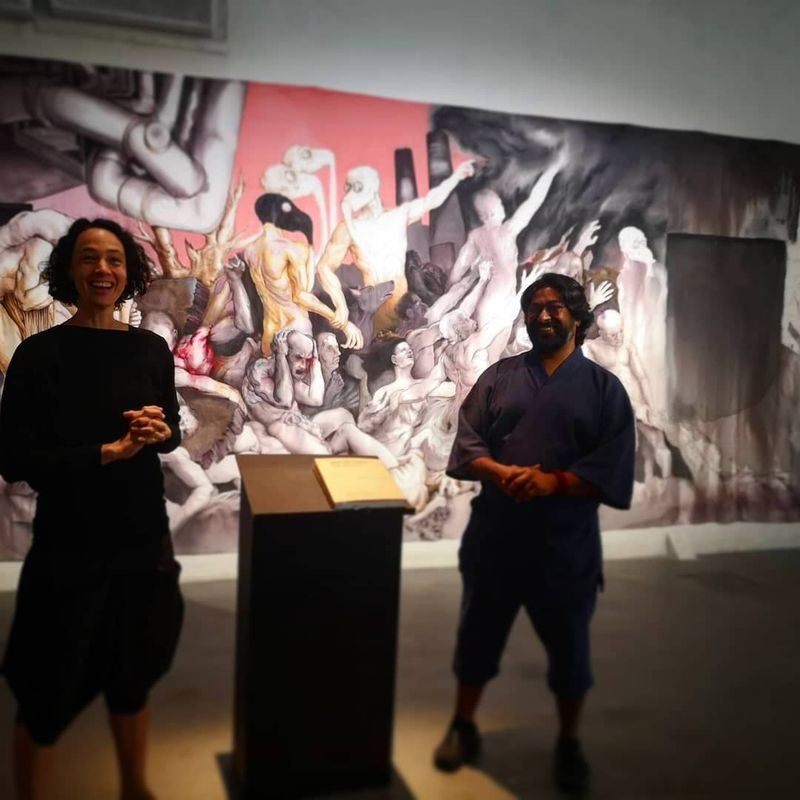
The Mänttä Art Festival’s artist list and theme for 2020 have been published. This year’s exhibition title is Erehtyminen / To Err Is Human.
“When looking for humanity, I kept running up against errors. Mistakes that keep us from being humane and others that launch us unexpectedly closer. Today, with the ever-growing presence of artificial intelligence, our ability to make mistakes is an increasingly significant aspect of our humanity”
– Anna Ruth, curator, Mantta Art Festival, 2021
Read more on the Festival website here
Interview and conversation with curator Anna Ruth:
Reciprocities
exhibition curated by Christine Langnauer, Vantaan Taidemuseo ARTSI, Vantaa
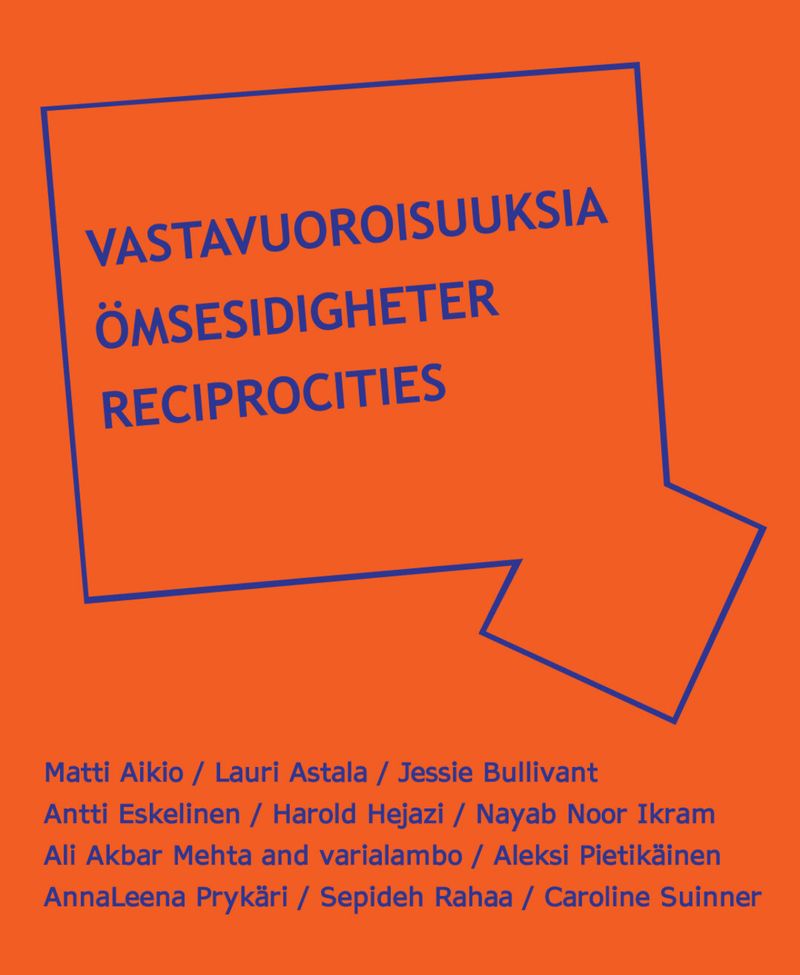
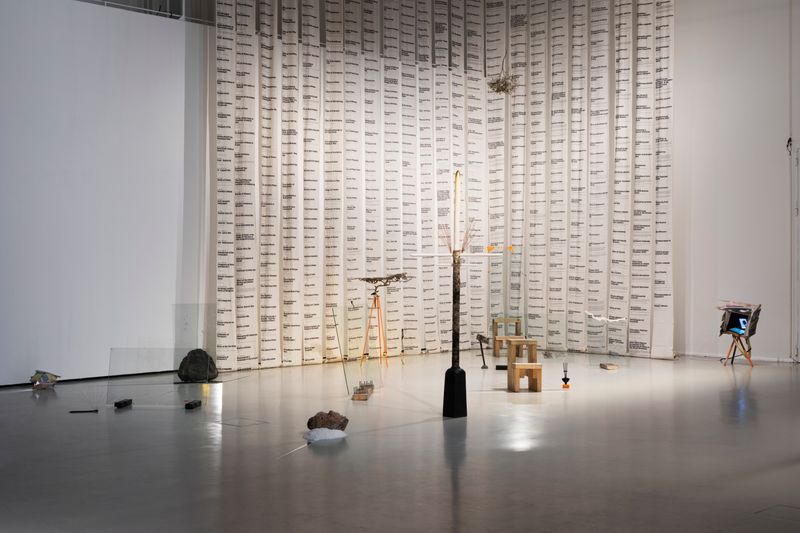
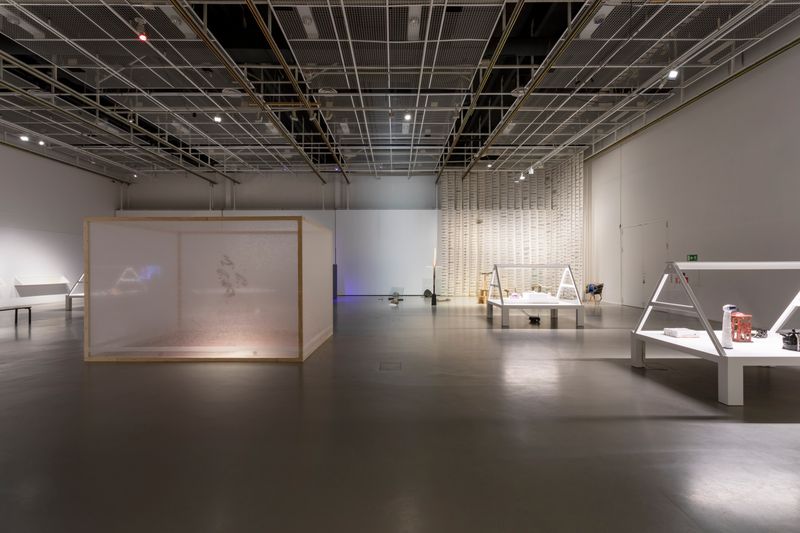

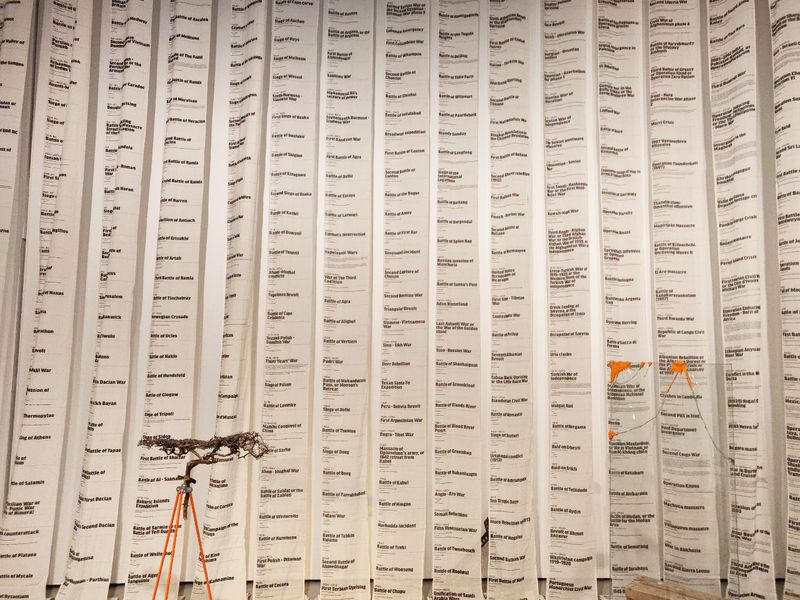
Narrating WAR / HABITAT 1, performance-Installation by Ali Akbar Mehta and varialambo, 2021
Narrating WAR / HABITAT 1 (I see so much when I am dying), is a performance-installation by Ali Akbar Mehta and varialambo, as part of the RECIPROCITIES group exhibition curated by Christine Langenauer at Vantaa Taidemuseo ARTSI, Vaanta Finland.
Performance dates:
- Friday 12.02.2021 (cancelled)
- Wednesday 10.03.2021 (cancelled)
- Wednesday 14.04.2021 (cancelled)
- Sunday 16.05.2021 (cancelled)
The exhibition discusses power relations, practices, and systems that define groups of people or individuals according to how well they fit into the norms in power. Who are we dependent on? Who has the power to decide the things that affect us and how do those decisions affect our lives? What is the norm? The exhibition is based on the current period of exception, which has raised these issues even more strongly.
Read the curatorial note, written by Christine Langenauer, here.
…
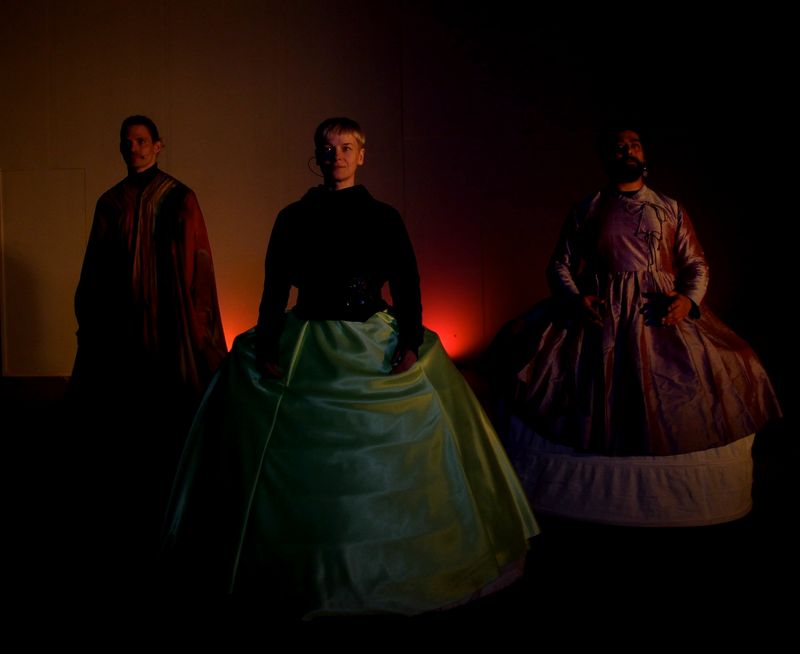
Narrating WAR / HABITAT 1 (I see so much when I am dying), performance by Ali Akbar Mehta and varialambo, as part of the RECIPROCITIES group exhibition curated by Christine Langenauer at Vantaa Taidemuseo ARTSI, Vaanta Finland.
Narrating WAR / HABITAT 1 (I see so much when I am dying)
Ali Akbar Mehta and varialambo
Konepaja, Helsinki
2021
…
The performance installation Narrating WAR / HABITAT 1 (I see so much when I am dying) by Ali Akbar Mehta and varialambo (Varia Sjöström and Hatz Lambo) is a coming together of two discrete streams of thinking that reflect on the notions of violence, conflict and forms of countering them. While the performance Narrating WAR is based on a comprehensive, continually updated timeline of ‘wars, battles, sieges, revolutions, bombings and rebellions’ – from 3000 BCE up to the present, it is located within the universe of the HABITAT 1 as a sanctuary that facilitates interactive defragmentation. The performance claims that the most continuous history of humanity is the histories of conflict, and shifts the gaze to look at wars as ‘a single, global planetary civil war’. The aim of this performance is to ask ‘How to care for the pain of others?’ ‘How to Narrate War?
Narrating War
Violence & the culture it consumes/perpetuates is a fundamental condition lodged in the core of human experience. It is simultaneously private, public, self-intimating & collective. War is an easy thing to look away from, if we are sitting miles away – we change the channel, we compartmentalise them, sort and neatly fold them into civilizations, time periods, regions and nationalities. By accepting war as normal we have become passive participants. War tears, rends. War rips open, eviscerates. War scorches. War dismembers. War ruins. War is actually Hell. To make visible this phenomena, I began research in 2014 to compile a timeline of ‘every war, battle, revolt, revolution, siege, sacking, rebellion, bombing & insurgency’, from 3000 BC to the present. This ongoing timeline/database is the foundation of the project, and forms the key ‘script’ for an ongoing multimedia performance-reading of this list, titled ‘Narrating War’.
As an endurance performance designed to last for hours & often days conducted in sites of violence, and sites of knowledge production, the act of reading, almost like a litany, is imagined as an act of mourning, of remembrance, & deterrence from continued violence & conflict: only when we are confronted with war in its entirety as a whole, as a continuous, singular event encompassing 5018 years, is there a possibility to be jolted out of our stupor & shed our complacence.
Narrating War focuses on the current situation of a permanent state of conflict across the globe, addressing violent incidents in the world not as isolated events but as a condition of an ongoing, unparalleled warfare – it insists above all, that to ignore what threatens us is both irresponsible and dangerous. The concern here is not to celebrate war, but to mourn those who have died – to deal with memory: During World War I, civilians made up fewer than 5 percent of all casualties. Today, 75 percent or more of those killed or wounded in wars are non-combatants.
Rather than looking at War within the usual frameworks of national or international bodies of identity, the performance is concerned with a collective history and a global body of identity. It narrates a history of war, conflict, & violence as the most continuous, omnipresent & ongoing history of humanity, ‘a civil war on a planetary scale’ & evidences that the collective history of human conflict is second only to history of language/music.
The project as a performance reading tries to tell a story from which emerges an intense voyage rooted in that first war – leading to the most recent conflict, laying open the reality of it not being the last one either. To hold onto, without falling into despair – to hold onto the awareness that cultures can exist together, religions can exist together, and that we can exist together.
The length of this performance varies depending on available time, and may be decided with the organizers. The performance will include a sound piece and a silent video, requiring a microphone, a projector, a sound system and speakers.
Previously, Narrating War has been performed in its evolving iterations, at:
- Reciprocities, TaideMuseo ARTSI, Vaanta, 2021
- New Performance Turku, Festival 2020: Mobilities, Turku, Finland, 2020
- Relational Figures, Myymälä2, Helsinki, Finland, 2019
- Experimental Event IV: La Torre de Babel – curated by Anna Jensen and Andrea Coyotzi Borja, Valimo Hall of Palmgren Conservatory, Pori, Finland, 2018
- Carinarnica, Nova Gorica, Slovenia, 2018
- Performance LAB XV – curated by Vishnu Vardhani, Museum of Impossible Forms, Helsinki, Finland, 2018
- How to Participate in the Archive – curated by Vidisha Fadescha, TIFA Working Studios, Pune, India, 2018
- Memory of War – curated Heidi Hänninen, Kaapelitehdas, Helsinki, 2017
- Clark House, Mumbai, 2017
- Where does poetry nest? – curated by Giovanna Esposito Yussif, Pispala Memorial, Tampere, 2016
- Pan-African Space Station by Chimurenga Collective – curated by Ahmed Al Nawas, Kallio Public Library, Helsinki, 2016
Abdication of the Geniuses
Festival 2022, curated by Julius Valve, Oksasenkatu 11 Gallery and Maunulatalo
Abdication of the Geniuses
Otober 29-30, 2022
Abdication of the Geniuses 29 - 30.10.2022 is a Multidisciplinary Art Festival held at Oksasenkatu 11 -gallery and Maunulatalo culture centre, Helsinki.
The two-day festival shows, exhibits, envisions and converses interpretations of contemporary life. The artist-run festival exhibits performances, dance, video art, film, sound art, and experimental music.
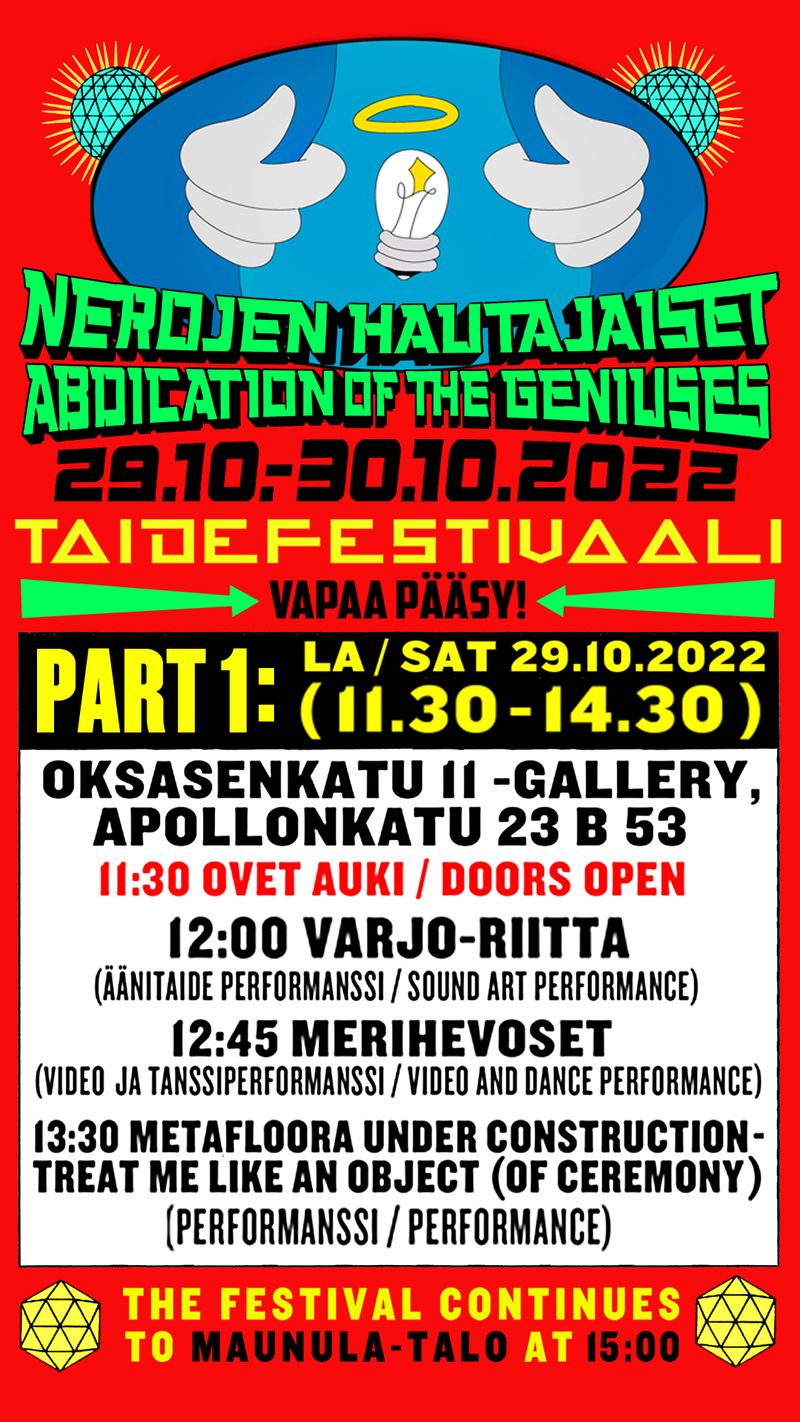
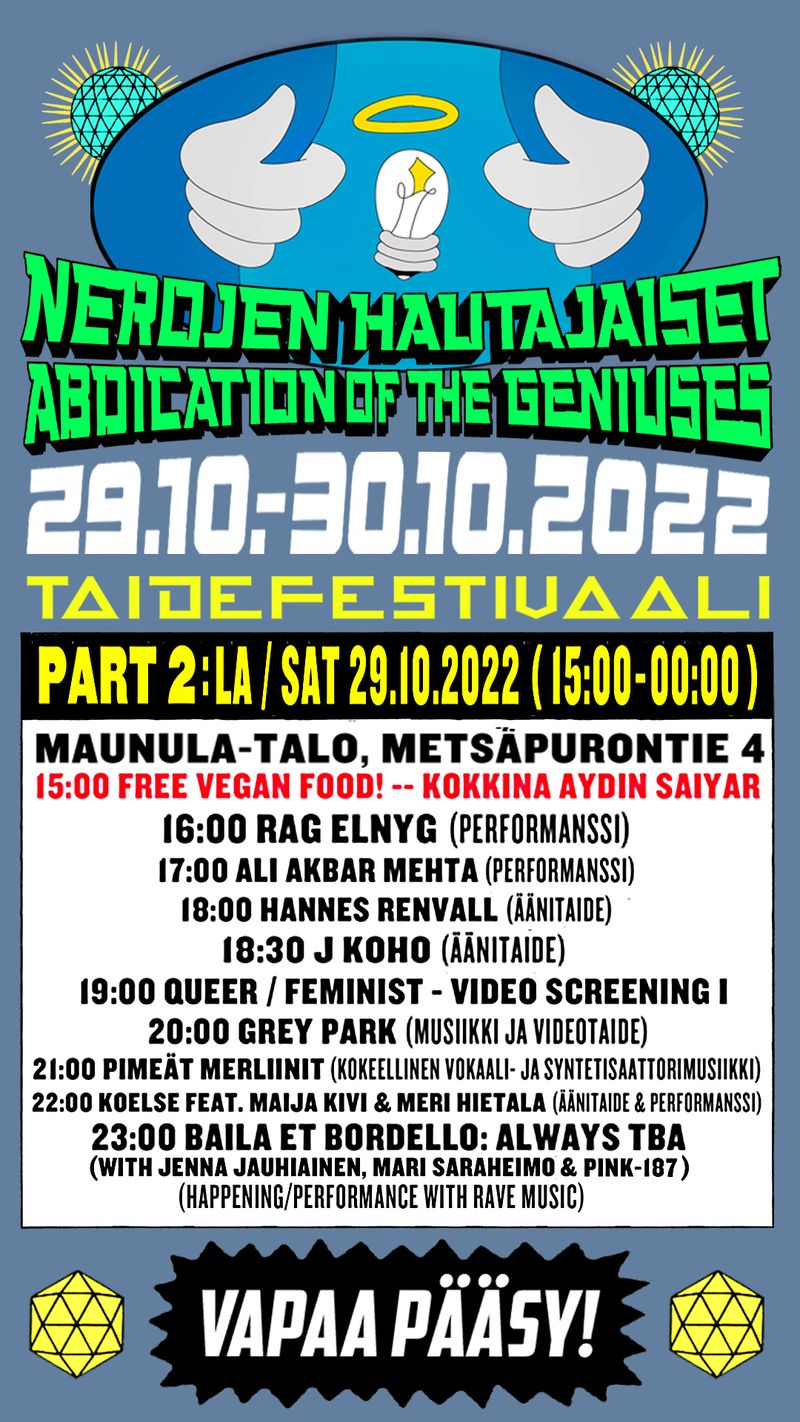

Nykytaide kriittisenä välineenä todellisuuden tutkimiseen Narrating WAR kutsuu katsojaa pohtimaan tiedostetun ja tiedostomattoman suhdetta ihmiskunnan jaetussa historiassa. Performatiivisessa lausunnassa luetellaan kattava lista sotia, taisteluita, ryöstöjä, piirityksiä, kapinoita, vallankumouksia ja pommituksia 3000 vuotta ennen ajanlaskun alkua ja päättyen nykypäivään. Ihmisolennot näyttäytyvät jatkuvana väkivaltan ja konfliktin historiana.
Ali Akbar Mehta on transmedian kanssa työskentelevä taiteilija, kuraattori, tutkija ja kirjoittaja. Mehtan tutkimuspohjaisesti rakentuva taiteellinen praktiikka tuottaa immersiivisiä ja interaktiivisia arkistoja, joissa hän kartoittaa tietoa moninäkökulmaisesti väkivallasta, konliktista ja traumasta. Tutkimalla konfliktialueita sekä hallitsevien voimarakenteiden narratiiveja Mehta tuo esiin unohdettuja kehoja, hävinneitä verkostoja, kadotettua dataa ja huomioimatta jätettyjä ympäristöjä. Taiteessaan Mehta kysyy, voiko taiteellinen mielikuvitus vaikuttaa politiikan, väkivalllan ja oikeudemukaisuuden käsityksiin?
Narrating WAR / HABITAT 1
Performance-Installation, in collaboration w/ varialambo

Narrating WAR / HABITAT 1 (I see so much when I am dying), performance by Ali Akbar Mehta and varialambo, as part of the RECIPROCITIES group exhibition curated by Christine Langenauer at Vantaa Taidemuseo ARTSI, Vaanta Finland.
Narrating WAR / HABITAT 1 (I see so much when I am dying)
Ali Akbar Mehta and varialambo
Konepaja, Helsinki
2021
…
The performance installation Narrating WAR / HABITAT 1 (I see so much when I am dying) by Ali Akbar Mehta and varialambo (Varia Sjöström and Hatz Lambo) is a coming together of two discrete streams of thinking that reflect on the notions of violence, conflict and forms of countering them. While the performance Narrating WAR is based on a comprehensive, continually updated timeline of ‘wars, battles, sieges, revolutions, bombings and rebellions’ – from 3000 BCE up to the present, it is located within the universe of the HABITAT 1 as a sanctuary that facilitates interactive defragmentation. The performance claims that the most continuous history of humanity is the histories of conflict, and shifts the gaze to look at wars as ‘a single, global planetary civil war’. The aim of this performance is to ask ‘How to care for the pain of others?’ ‘How to Narrate War?
Narrating WAR, New Performance Turku, Festival 2020: Mobilities
Performance by Ali Akbar Mehta with varialambo
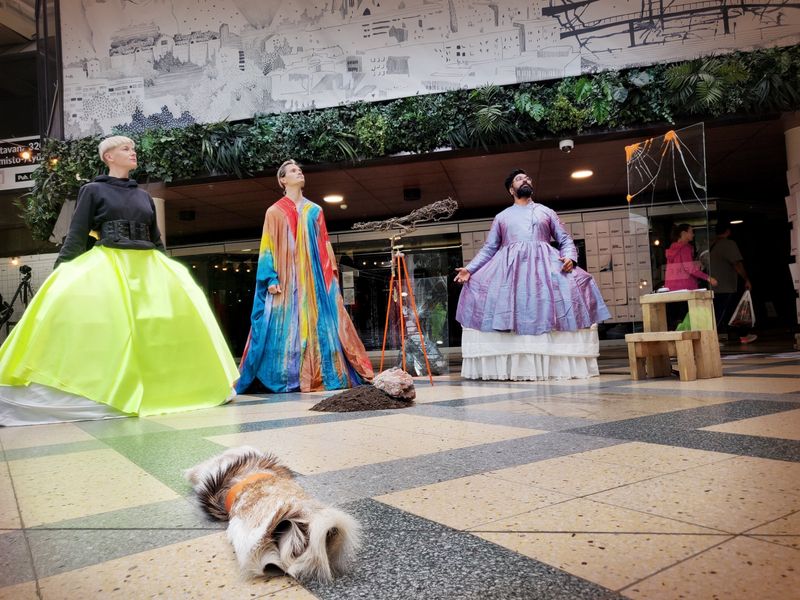
Narrating WAR is an invitation to imagine a relationship between the ‘known’ and the ‘unknown’ of our collective human history. It is an ongoing series of performance readings of a comprehensive list of ‘wars, battles, sacks, sieges, revolts, revolutions, bombings and insurgencies – from 3000 BC to the present’ that provides a comprehensive tableau of a history of human beings as a continuous history of violence and conflict.
This, the tenth iteration of Narrating WAR in the ongoing series of performances, is devised and re-imagined together with Helsinki based duo varialambo (Varia Sjöström and Hatz Lambo), the performance is an exploration of how to read a list of conflicts?
And so this performance is a reading of remembrance, of mourning, of not forgetting, of saying that the war that is coming is not the last one, or even that the war can be over if you want it. As such, it is a poetic encounter – where only the name of the conflict, it’s date(s) of occcurence, and the parties involved are read out – without explanations, backstories, aftermath or judgement. Yet, to be immersed in the historical presence of war can be a powerful poetic encounter.
This spatially and temporally scalable performance is extended or reduced in accordance with differently available conditions, and at the New Performance Turku, Festival 2020: Mobilities, a four-hour performance is conducted where contemporary conflicts from the year 2000 to the present are read.
The complete performance duration of Narrating WAR is over 12 days, and the 4-hour iteration in Turku, performed in collaboration with varialambo, focuses on conflicts from the year 2000 to the present.
watch the livestream on Instagram here
Narrating WAR, Mymmälä2, Helsinki
Performance Reading by Ali Akbar Mehta
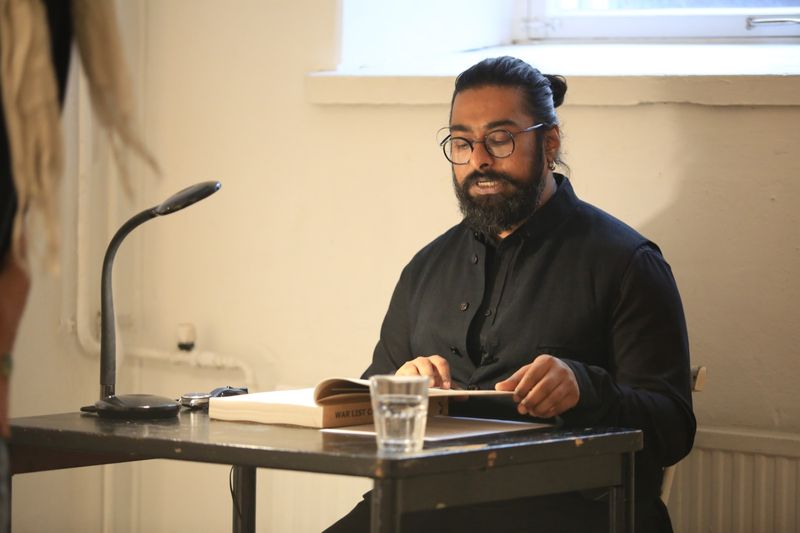

‘Narrating WAR – Performance Reading’ during the exhibition ‘Relational Figures’, 2019, Mymmälä2, Helsinki.
In the two-day performance reading, ‘Narrating War’, I read excerpts from the text, ‘WAR LIST CODEX’, as part of the group exhibition and performance series, ‘Relational Figures’, at Myymälä2. The reading narrates a history of war, conflict, and violence as the most continuous, omnipresent and ongoing history of humanity – a civil war on a planetary scale.
Cyborg Archives: WAR • ROOM • ECHO, TIFA Working Studios, Pune
Cyborg Archives: WAR • ROOM • ECHO is the third in a series of five performance and participatory installations, exhibited as part of the culmination of my residency at TIFA Working Studios
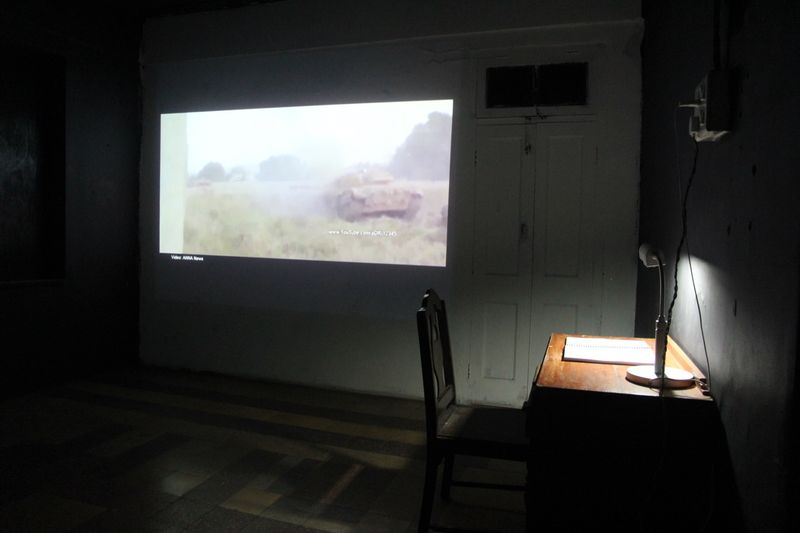
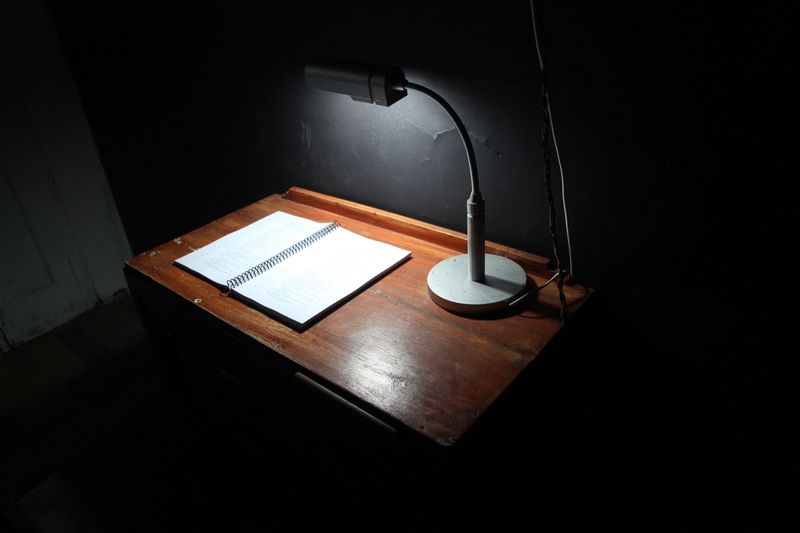
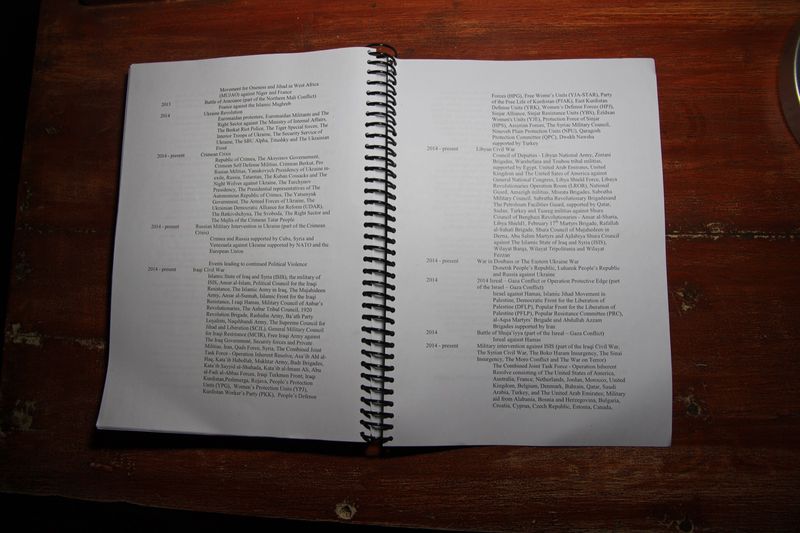
256 Million Colours of Violence is an ongoing project. To know more about this project, click here
Narrating War, Experimental Event VI – La Torre de Babel, Pori
curated by Anna Jensen, Andrea Coyotzi Borja and Sanna Ritvanen, Valimo Hall of Palmgren Conservatory
Narrating War, Carinarnica, Nova Gorcia
Read more about Carinarnica here
Narrating War, Museum of Impossible Forms, Helsinki
curated by Vishnu Vardhani as part of Performance LAB VII
Narrating War performed at Museum of Impossible Forms Helsinki, as part of Performance LAB VII on October 12, 2018.
Narrating War is an ongoing performance reading project that is a part of a larger project, WAR • ROOM • ECHO – Regarding the Pain of Other Cyborgs.
Narrating War, Kaapelitehdas, Helsinki
curated by Heidi Hänninen
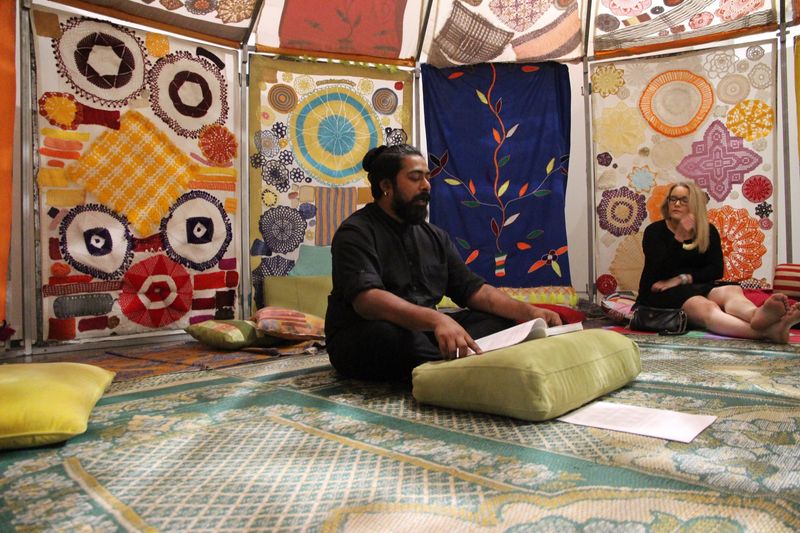
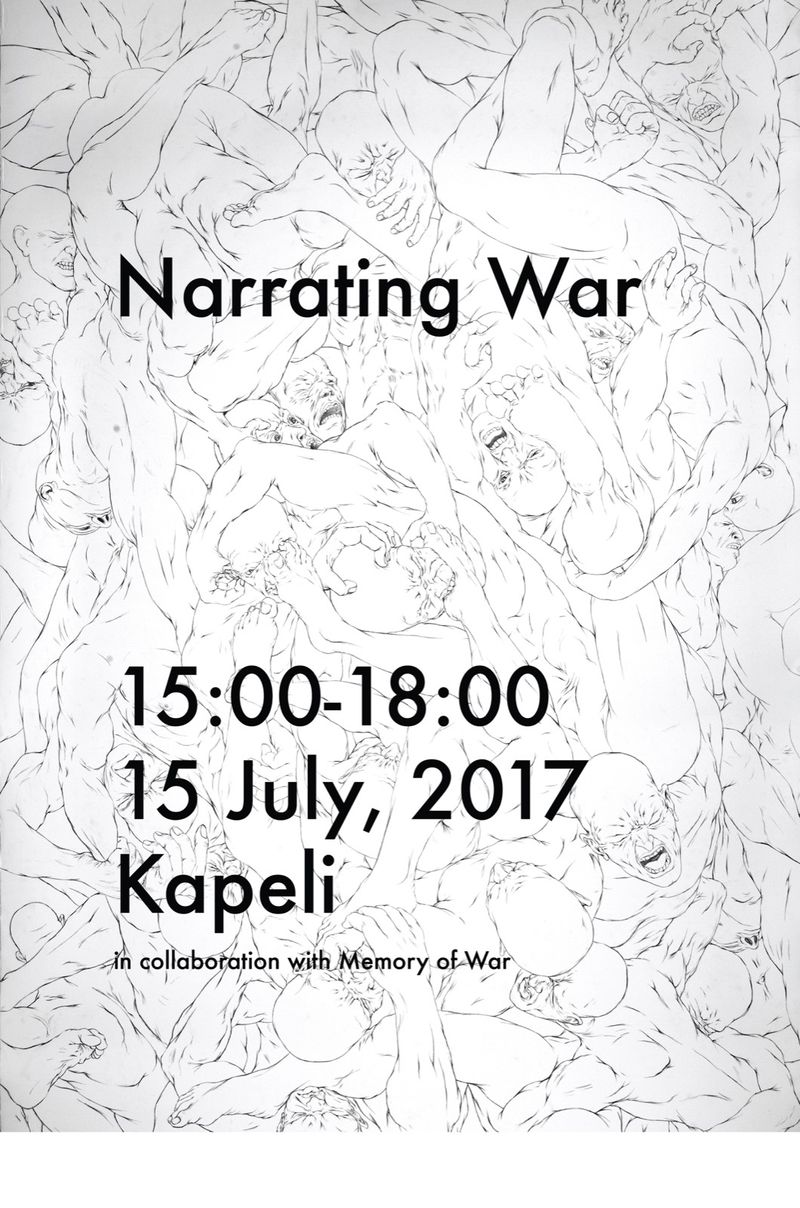
Narrating War, Clark House, Mumbai
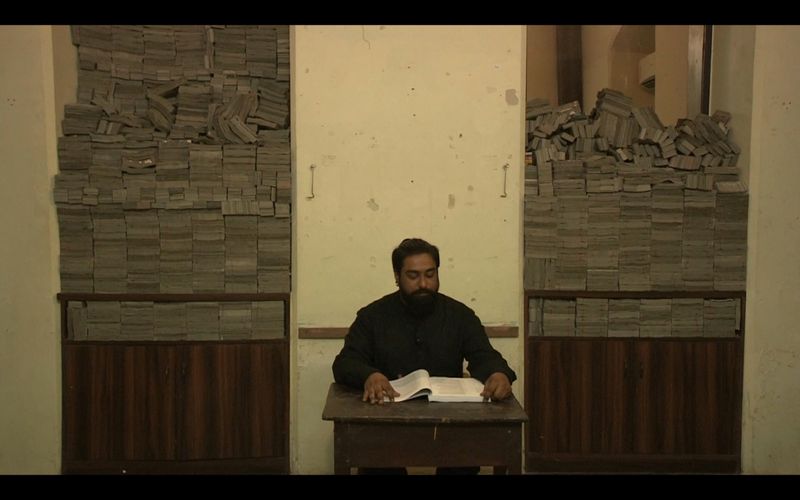
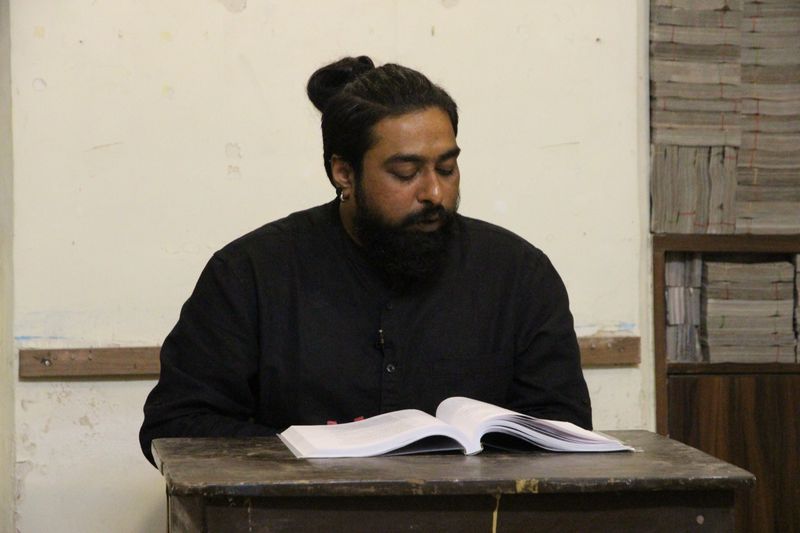
Narrating War at The Clark House Artist Collective, is a 3 day performance reading of select excerpts from the ‘War list codex’, on March 21 - 23, 2017, from 11 am to 5 pm.
See the complete performance here
Previously, the performance has been executed in two spaces as part of projects/exhibitions in Helsinki and Tampere. The performances are part of an ongoing project ‘WAR • ROOM • ECHO: Regarding the Pain of Other Cyborgs’, and is imagined to be a endurance performance over several hours, sometimes days – where the act of reading, almost like a litany, the list of Every War, Battle, Sack, Siege, Revolt and Revolution from 3000BC to the present, creating a tableaux of a 5017 year history of human conflict – becomes simultaneously an act of mourning, remembrance and a call for action, towards change.
Narrating War, Pispala, Tampere
Narrating War is ongoing multimedia performance-reading of ‘War List Codex’, a comprehensive timeline of every ‘war, battle, revolt, revolution, siege, sacking, rebellion, bombing & insurgency’, from 3000 BC to the present.
This reading took place at The Memorial of the Red Guards, on September 6, 2016.
The Red Gaurds died during the Finnish Civil War in Pispala, Tampere. The inscription in the stone says,
‘On this Pispala ridge, the Red Guard in Tampere last stood with weopans in hand defending their cause in 1918’.
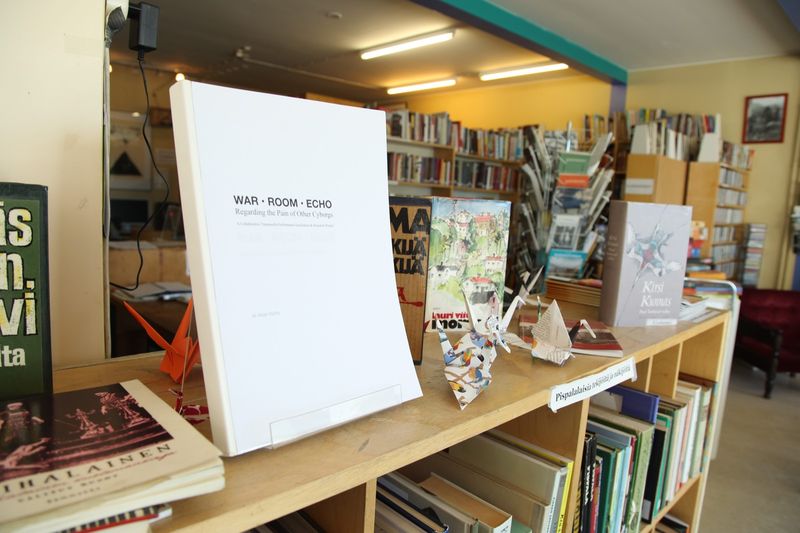
The project is ongoing and a copy of the book in its current state is donated to the Pispala Library on the occasion of the exhibition, ‘Where does poetry nest?’, on 6th September, 2016 in memory of the over 5000 year old Civil War that the world, it seems, has not seen enough of.

Missä runous pesii? | Where does poetry nest?
Poetry – an everlasting inquiry of art, drives language outside its borders. Poetry sets into play every possible moment of signification by placing the exercise of imagination at the center of all contradictions. Poetry as an aesthetic praxis outlines our possibilities to challenge the everyday, locating potential transformation at the centre of our political enunciations. Poetry contradicts and slips between the cracks of meaning, propagating evidence that something else is there. In its intimacy, it draws complex figures from our emotions, just to blur them into new and old unreachable impossibles, to keep us moving, desiring.
If we listen to poetry carefully, we realise that it is something social. Its sociality is voiced as a constant transgression to the de politicised forms of enunciation; these poetic echoes keep on challenging every space of retreat. Poetry captures tautology and pushes it to the edges. Since there is no purity in poetry, it confronts general assumptions with a subtle whistle that triggers a dance of our subjectivities, nude and broken out in sweat. There is nothing too radical for poetry; even if something has already been said before, it can always be said differently.
Poetry is looking back at us from the other end laughing, flirting, fugitive.
Poetry grounds utopia not as something reachable, but as a practice for keeping the unreachable present. Inhabiting between sentences, it bears testimony that other histories have always been present, through gluing their words together. Within it, art becomes our interlocutor for these other histories, always rebelling, always demanding justice and dignity, driven by the air which feeds change. Another history which finds in every wall not a border, but a place for public denouncement and mobilisation.
Where does poetry nest? It is not a question asking for an answer, but a question mark waiting to be followed.
D.M.
[*] The Mexican artist David Alfaro Siqueiros recalled this question during his time in Lecumberri prison: “Where does poetry nest? I can’t say how long ago this question emerged within me. But it reemerged when I listened to Macario Huízar. And the first time I followed it through to interrogation was in prison among a group of dopers.”
Narrating War, Kallio Public Library, Helsinki
part of Chimurenga Collective's 'The Pan African Space Station', curated by Ahmed Al-Nawas
A 3 minute excerpt of my radio performance, which was a one hour Performance Reading of Wars from 2000 to 2011, at Kallio Public Library as part of Chimurenga’s Pan African Space Station live radio broadcast.
Originally titled null.void; // a sermon of nothingness and a space odyssey of zero movement and tycho magnetic anomalies, Narrating War is a Transmedia Performance-lecture recitation and Research Project. It comprises a procedural audio soundscape of glitch sounds using static and radio frequencies, and a performance recitation of a comprehensive list of every war, battle, siege, sacking, revolt and revolution, bombing and insurgency spanning 5014 years of human conflict and violence.

Narrating War is a part of a currently-in-developement project titled WAR • ROOM• ECHO: Regarding the Pain of Other Cyborgs.
For the full one hour radio broadcast of the performance, see The Chimurenga Archives
null.void
Soundscapes for WAR • ROOM • ECHO – Regarding the Pain of Other Cyborgs
The soundscape is dense and layered, blended, and forever thinning and thickening. One hears no unison, only a constant figure to ground motion of densities, decays and fades, of overlapping, alternating, and interlocking sounds… One sound stands out momentarily, then just as quickly fades into a distance, overlapped or echoed by a new or repeated emergence in the mosaic. The idea is to have the sound raise the question about the relation of voice and sound viz. place and non-place, to play with associative memories to generate a lucid space between memory and nothingness. And when you hear the way birds overlap in the forest and you hear the electromagnetic sounds of space, all of a sudden you can grasp something at a sensuous level that is considerably more abstract and difficult to convey.
WAR ROOM ECHO draft 01
WAR ROOM ECHO Puredata Soundscape
Null.void
Substance Final Mix
Mänttä's Fine Arts Weeks can give itself to the use of artificial intelligence - Man has a similar relationship to artificial intelligence as to God
by Jussi Mankkinen, for Yle News

Read here
Makkaraa pitelevä koira herättää Pariisin-ikävän Mäntässä
Sini Mononen & Sanna Lipponen, for Helsinki Sanomat, 2021
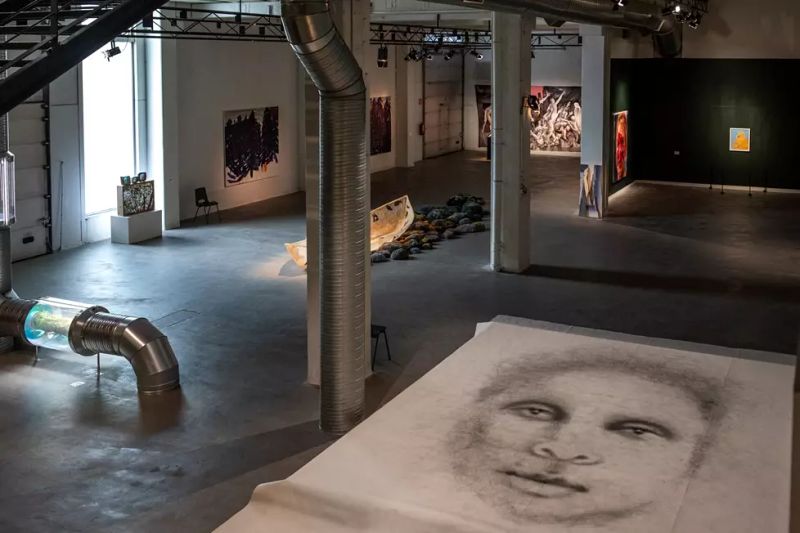
Read here
Ali Akbar Mehta & varialambo - Narrating WAR / Habitat 1
Taidemuseo Artsin avajaiset
Narrating War / Pripovedovanje vojne: Ali Akbar Mehta
My Night, 2018
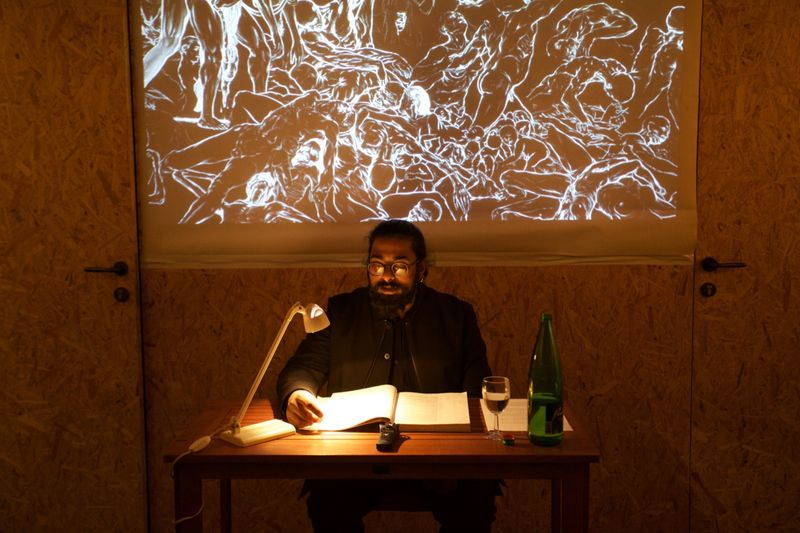
Read here
